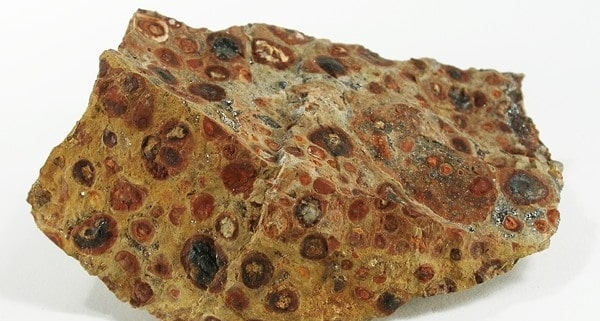What are the ways to find an aluminium ores?
The discovered an ore of aluminium (bauxite) deposits are all formed under superficial conditions, including weathering-residual type (latite type bauxite), accumulation type, and sedimentary type bauxite.
Laterite-type bauxite (aluminum ore) is an aluminum-bearing parent rock that has favorable terrain (such as residual hills, low mountains, and terraces) with good excretion under hot and humid climate conditions. Under the action of water, CO2, and organisms, it weathers and decomposes. The dissolved substances K, Na, Ca, Mg, and SiO2 are leached and discharged, and the less mobile substances Al, Fe, Ti remain in place, forming laterite-type bauxite. Accumulated bauxite is an ore of aluminium, a weathered laterite crust, or a formed laterite deposit. Under the action of gravity, water, and natural acids (sulfuric acid, carbonic acid, organic acid), it is mechanically or chemically weathered, eroded, and transported. It accumulates in mountain slope depressions, valleys, offshore lake basins or coastal lagoons, and confined sea basins, and forms sedimentary bauxite in an aquatic environment.
Prospecting Signs of Bauxite
1. The appearance is similar to clay rock, but compared with clay rock, the lithology is dense and the hardness is greater (diaspore 6.5-7, boehmite 3.5, gibbsite 2.5-3.5), and the density is higher Large (diaspore 3.2-3.5, boehmite 3.01-3.46, gibbsite 2.3-2.43), no plasticity.
2. The color is white, off-white, yellowish-white, yellow-brown, gray-green, light red, or colorless, and the color is related to the impurities contained.
3. Glass luster, pearl luster on cleavage surface, shell-like fracture, brittle, white streaks.
4. Cryptocrystalline massive, scaly, colloidal, radial fiber, crust, stalactite, oolitic, bean, and spherulitic nodules.
5. Gibbsite has an earthy smell.
6. It is often related to modern karst surfaces or ancient karst surfaces.
7. Laterite-type bauxite is mainly distributed in tropical and subtropical areas near the equator. It is related to the weathering crust of laterite in modern times. The age is mainly the Tertiary, and the second is the Mesozoic. The weathered parent rocks are mainly 1) basalt; 2) granite, diorite, nepheline syenite; 3) gneiss, schist, phyllite, and metamorphic basalt, granite in ancient metamorphic rocks; 4) various types of fragments Clastic rocks; 5) Carbonate rocks.
8. Sedimentary bauxite deposits are often developed in marine carbonate rock areas and are produced in carbonate rock series. They have a certain horizon. The aluminum-bearing horizon ranges from the Devonian to the Cenozoic but is mainly produced In the Carboniferous, Cretaceous, and Tertiary. It is also found in the Cenozoic continental sedimentary rocks, distributed in the paleo-weathering crust red soil, unconformably in contact with the underlying surrounding rock, and in conformity contact with the overlying lacustrine claystone and fluvial sandstone.
If you need help with discovery, manufacturing, or equipment maintenance, contact us today!!!!!!!!!Whatsapp:+8613319277356 Email:[email protected]



